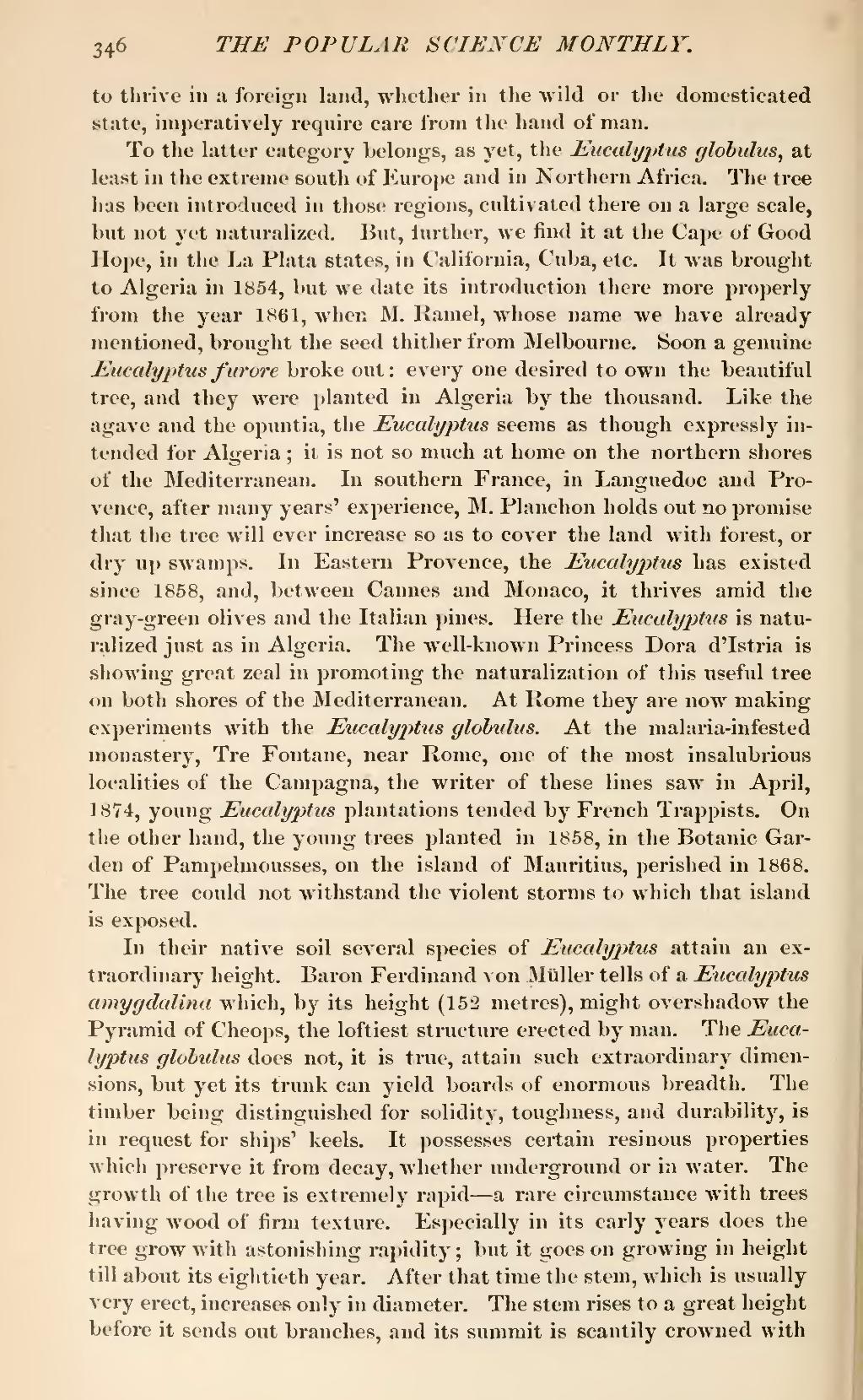to thrive in a foreign land, whether in the wild or the domesticated state, imperatively require care from the hand of man.
To the latter category belongs, as yet, the Eucalyptus globulus, at least in the extreme south of Europe and in Northern Africa. The tree has been introduced in those regions, cultivated there on a large scale, but not yet naturalized. But, further, we find it at the Cape of Good Hope, in the La Plata states, in California, Cuba, etc. It was brought to Algeria in 1854, but we date its introduction there more properly from the year 1861, when M. Ramel, whose name we have already mentioned, brought the seed thither from Melbourne. Soon a genuine Eucalyptus furore broke out: every one desired to own the beautiful tree, and they were planted in Algeria by the thousand. Like the agave and the opuntia, the Eucalyptus seems as though expressly intended for Algeria: it is not so much at home on the northern shores of the Mediterranean. In southern France, in Languedoc and Provence, after many years' experience, M. Planchon holds out no promise that the tree will ever increase so as to cover the land with forest, or dry up swamps. In Eastern Provence, the Eucalyptus has existed since 1858, and, between Cannes and Monaco, it thrives amid the gray-green olives and the Italian pines. Here the Eucalyptus is naturalized just as in Algeria. The well-known Princess Dora d'Istria is showing great zeal in promoting the naturalization of this useful tree on both shores of the Mediterranean, At Rome they are now making experiments with the Eucalyptus globulus. At the malaria-infested monastery, Tre Fontane, near Rome, one of the most insalubrious localities of the Campagna, the writer of these lines saw in April, 1874, young Eucalyptus plantations tended by French Trappists. On the other hand, the young trees planted in 1858, in the Botanic Garden of Pampelmousses, on the island of Mauritius, perished in 1868. The trees could not withstand the violent storms to which that island is exposed.
In their native soil several species of Eucalyptus attain an extraordinary height. Baron Ferdinand von Müller tells of a Eucalyptus amygdalina which, by its height (152 metres), might overshadow the Pyramid of Cheops, the loftiest structure erected by man. The Eucalyptus globulus does not, it is true, attain such extraordinary dimensions, but yet its trunk can yield boards of enormous breadth. The timber being distinguished for solidity, toughness, and durability, is in request for ships' keels. It possesses certain resinous properties which preserve it from decay, whether underground or in water. The growth of the tree is extremely rapid—a rare circumstance with trees having wood of firm texture. Especially in its early years does the tree grow with astonishing rapidity; but it goes on grooving in height till about its eightieth year. After that time the stem, which is usually very erect, increases only in diameter. The stem rises to a great height before it sends out branches, and its summit is scantily crowned with
